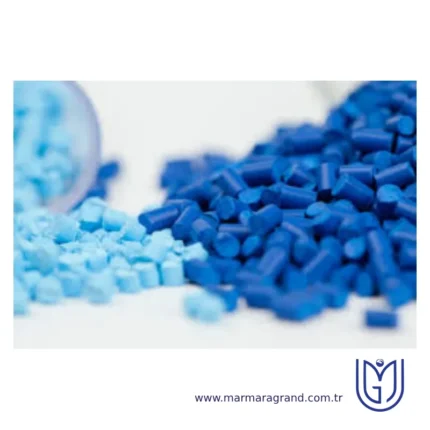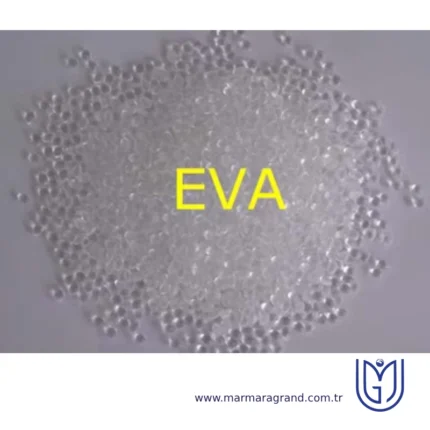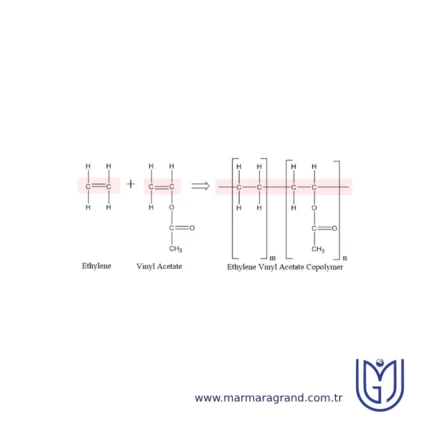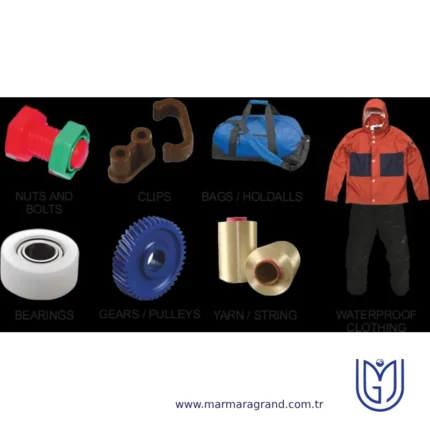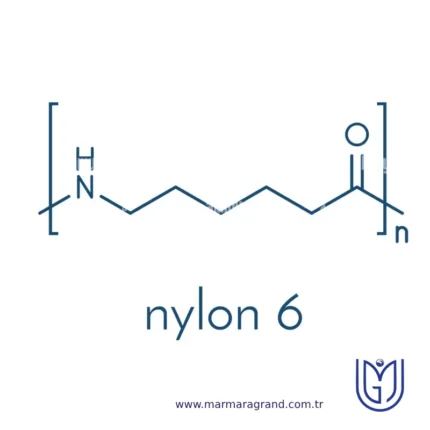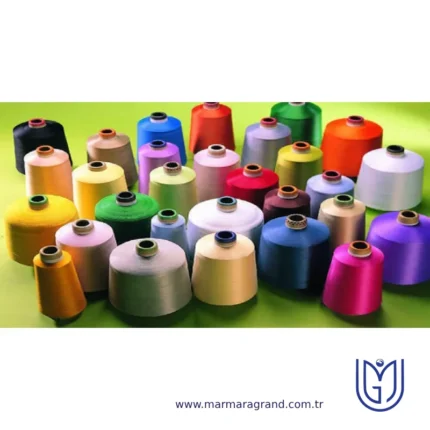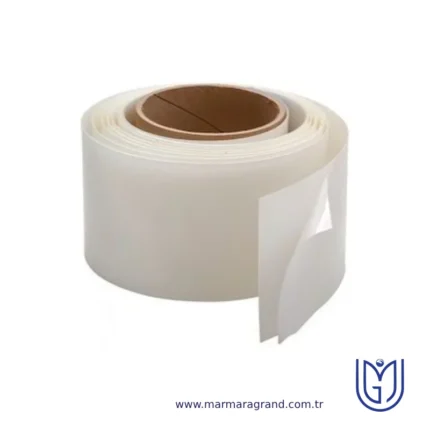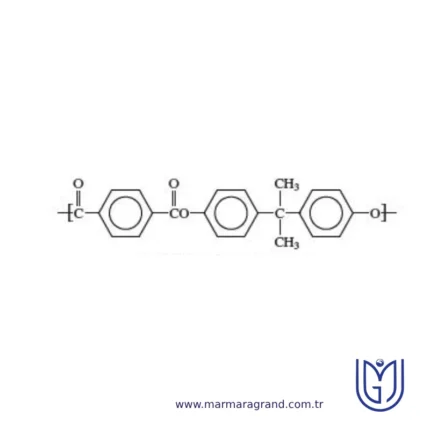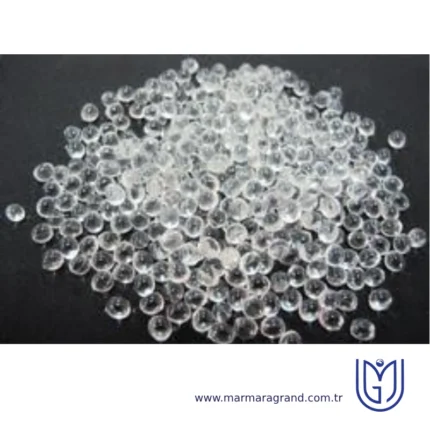Ethylene Vinyl Acetate (EVA)
Ethylene Vinyl Acetate (EVA) is a copolymer composed of ethylene and vinyl acetate (VAC). The properties of EVA vary depending on the ratio of these two components, with vinyl acetate content typically ranging from 1% to 40% by weight.
Structure
Ethylene Vinyl Acetate (EVA) is a copolymer composed of ethylene and vinyl acetate (VAC) monomers, with its structure characterized by randomly distributed vinyl acetate units within a polyethylene-like backbone. The proportion of vinyl acetate in the copolymer significantly influences its properties, with lower vinyl acetate content (typically below 10%) resulting in a more rigid, polyethylene-like material, while higher vinyl acetate content (above 40%) leads to a more rubbery and flexible structure. The presence of vinyl acetate disrupts the crystallinity of polyethylene, enhancing the copolymer’s flexibility, impact resistance, and transparency. EVA exhibits a balance between thermoplastic and elastomeric properties, making it widely used in applications such as adhesives, foams, films, and footwear. Its molecular structure provides excellent toughness, stress-crack resistance, and adhesion to various substrates, making it a versatile polymer in multiple industries.
Properties
Ethylene Vinyl Acetate (EVA) copolymers exhibit a unique combination of properties that vary based on the vinyl acetate (VAC) content. They offer excellent flexibility, elasticity, and toughness, with higher VAC content leading to increased softness, transparency, and impact resistance. EVA has low-temperature resistance, maintaining flexibility even at sub-zero temperatures, and demonstrates good stress-crack resistance. It is also lightweight, has a low density, and provides excellent adhesion to various substrates, making it ideal for adhesives and coatings. Additionally, EVA is resistant to UV radiation and environmental stress, contributing to its durability in outdoor applications. It has good chemical resistance to water, oils, and certain solvents, though it may degrade under high temperatures or prolonged exposure to strong chemicals. The copolymer is also non-toxic, making it suitable for medical and food-contact applications. Its thermal and electrical insulation properties further enhance its versatility in industrial, packaging, and footwear applications.
Applications of Ethylene Vinyl Acetate (EVA) Copolymers:
- Footwear: Used in midsoles, insoles, and outsoles for cushioning and flexibility.
- Adhesives: Hot melt adhesives in packaging, bookbinding, and woodworking.
- Foams: Sports mats, yoga mats, and padding materials.
- Packaging: Film applications for food packaging and medical films.
- Automotive: Interior trims, soundproofing, and under-the-hood components.
- Solar Panels: Encapsulation of photovoltaic cells for durability and insulation.
- Wire & Cable Insulation: Used in electrical applications due to flexibility and insulation properties.
- Toys & Consumer Goods: Soft, flexible materials for safety and durability.
- Flexibility & Softness: Offers rubber-like elasticity and comfort.
- Lightweight: Reduces overall product weight while maintaining durability.
- Good Adhesion: Bonds well with various substrates, making it ideal for adhesives.
- Weather & UV Resistance: Suitable for outdoor applications like solar panels and footwear.
- Chemical Resistance: Resists many chemicals, oils, and solvents.
- Low-Temperature Performance: Maintains flexibility in cold conditions.
- Non-Toxic & Safe: Used in food packaging and medical applications.
- Lower Heat Resistance: Can degrade or deform at high temperatures.
- Lower Mechanical Strength: Compared to other thermoplastics like polyethylene or polypropylene.
- Aging & Degradation: May degrade over time when exposed to UV radiation or harsh conditions.
- Flammability: Not inherently flame-retardant without additives.
- Cost: Can be more expensive than some alternative plastics like PVC.
Nylon 6
Nylon 6 is a synthetic engineering thermoplastic belonging to the polyamide (PA) family. It is widely used for its high strength, durability, thermal resistance, and chemical stability. Nylon 6 is synthesized from a single monomer, caprolactam, through ring-opening polymerization. This makes Nylon 6 easier to produce and process.
PropertiesNylon 6 is a strong, lightweight, and durable engineering thermoplastic known for its excellent mechanical and thermal properties. It has high tensile strength, toughness, and impact resistance, making it suitable for demanding applications. It also exhibits good wear resistance, low friction, and excellent abrasion resistance, which enhances its longevity in mechanical parts. Nylon 6 has a melting point of approximately 220°C and maintains stability over a wide temperature range. It offers good chemical resistance to oils, greases, and many solvents but is sensitive to strong acids and bases. One of its notable characteristics is its high moisture absorption, which can affect its mechanical strength and dimensional stability. Nylon 6 also has good electrical insulating properties, making it useful in electrical and electronic applications. Additionally, it is easily processable through injection molding, extrusion, and fiber spinning, allowing for its widespread use in textiles, automotive components, and industrial applications.
StructureNylon 6 is a synthetic polymer belonging to the polyamide family, characterized by its repeating units derived from caprolactam through a ring-opening polymerization process. The molecular structure of Nylon 6 consists of a linear chain of amide (–CONH–) linkages interspersed with six-carbon alkyl segments, forming a highly regular and symmetrical backbone that contributes to its notable mechanical strength, thermal stability, and chemical resistance. Unlike Nylon 6,6, which is synthesized from two different monomers, Nylon 6 is synthesized from a single monomer, ε-caprolactam, which undergoes polymerization through successive opening of the lactam ring, resulting in a continuous chain structure. The presence of hydrogen bonding between adjacent polymer chains enhances intermolecular interactions, leading to high crystallinity and improved tensile properties. This structural arrangement imparts Nylon 6 with desirable characteristics such as high flexibility, durability, and resistance to abrasion, making it widely utilized in textiles, engineering plastics, and industrial applications.
Applications of Nylon 6
- Textiles and Fabrics: Nylon 6 is widely used in the textile industry to produce items such as hosiery, swimwear, activewear, and undergarments due to its elasticity, strength, and smooth texture.
- Industrial Uses: Its high tensile strength and abrasion resistance make Nylon 6 suitable for manufacturing ropes, fishing nets, conveyor belts, and tire cords.
- Automotive Components: Nylon 6 is utilized in producing various automotive parts, including gears, bearings, and under-the-hood components, because of its durability and thermal stability.
- Consumer Goods: Common household items like toothbrush bristles, combs, and kitchen utensils are often made from Nylon 6 due to its resilience and ease of molding.
- Engineering Plastics: Nylon 6 is used in the production of engineering plastics for applications such as gears, bearings, and other mechanical components, owing to its strength and wear resistance.
Advantages of Nylon 6
- High Strength and Durability: Nylon 6 exhibits excellent tensile strength, making it suitable for products requiring long-lasting performance.
- Flexibility and Elasticity: The material offers good flexibility and can return to its original shape after stretching, which is beneficial for textile applications.
- Chemical Resistance: Nylon 6 is resistant to a wide range of chemicals, including oils and solvents, enhancing its suitability for various industrial applications.
- Thermal Resistance: With a high melting point, Nylon 6 can withstand elevated temperatures, making it appropriate for applications involving heat exposure.
- Lightweight: Nylon 6 is lighter than many metals, which is advantageous in applications where weight reduction is desired.
Disadvantages of Nylon 6
- Moisture Absorption: Nylon 6 is hygroscopic and can absorb moisture from the environment, leading to dimensional changes and potential degradation of mechanical properties.
- UV Sensitivity: Prolonged exposure to ultraviolet light can cause Nylon 6 to degrade, leading to discoloration and loss of strength.
- Lower Impact Resistance: Compared to some other engineering plastics, Nylon 6 may exhibit lower impact resistance, which could limit its use in high-impact applications.
- Processing Challenges: Nylon 6 requires careful control during processing, as it is sensitive to moisture and can degrade if not properly dried before molding.
Nylon 6-6
Nylon 66 is a type of synthetic polymer belonging to the nylon family of polyamides. It was first developed by Wallace Carothers and his team at DuPont in 1935. Nylon 66 is widely used due to its excellent mechanical properties, high thermal resistance, and chemical stability.
Structure
Nylon 66 is a synthetic polyamide with a repeating molecular structure formed through the condensation polymerization of hexamethylenediamine and adipic acid. The polymer consists of amide (-CONH-) linkages connecting alternating units of six carbon atoms from each monomer, resulting in a linear, highly ordered structure. This arrangement allows strong hydrogen bonding between polymer chains, enhancing its strength, rigidity, and thermal resistance. The repeating unit in Nylon 66 contains both aliphatic and amide groups, contributing to its balanced combination of flexibility and toughness. The presence of these intermolecular forces gives Nylon 66 its high melting point, excellent wear resistance, and mechanical stability, making it a widely used material in engineering and industrial applications.
Properties
Nylon 66 exhibits a combination of excellent mechanical, thermal, and chemical properties, making it highly suitable for various industrial applications. It has high tensile strength, toughness, and rigidity, which contribute to its durability and resistance to wear and abrasion. Its high melting point, typically around 255°C, allows it to maintain structural integrity under elevated temperatures. Nylon 66 also has good chemical resistance, particularly against oils, solvents, and many hydrocarbons, though it can absorb moisture, which may affect its mechanical properties. It has low friction and self-lubricating properties, making it ideal for applications requiring smooth movement and reduced wear. Additionally, Nylon 66 has good electrical insulation properties, making it useful in electrical and electronic components. Its ability to be easily molded and processed further enhances its versatility in manufacturing.
Applications of Nylon 66:
- Automotive parts such as gears, bearings, fuel lines, and radiator tanks
- Electrical and electronic components like connectors, cable ties, and insulators
- Industrial machinery components, including conveyor belts and mechanical fasteners
- Textiles and fibers used in carpets, ropes, parachutes, and outdoor wear
- Consumer goods such as sports equipment, kitchen utensils, and zippers
- Packaging materials, especially in films and coatings for food and medical applications
- High tensile strength and durability
- Excellent resistance to wear, abrasion, and impact
- High melting point and good thermal stability
- Good chemical resistance to oils, solvents, and hydrocarbons
- Low friction and self-lubricating properties
- Good electrical insulation properties
- Easily moldable and processable for various applications
- Absorbs moisture, which can affect mechanical and dimensional stability
- Can degrade under prolonged exposure to UV light without proper additives
- More expensive than other types of nylon, such as Nylon 6
- Can be attacked by strong acids and bases
Polyarylate (PAR)
Polyarylate (PAR) is a type of high-performance aromatic polyester known for its excellent thermal stability, mechanical strength, and resistance to chemicals and UV radiation. It is commonly used in engineering applications where durability and heat resistance are required.
Structure
Polyarylate (PAR) is a high-performance thermoplastic polymer composed of repeating aromatic ester units in its backbone. Its structure consists of aromatic rings (benzene) connected by ester (-COO-) linkages, giving it excellent thermal and mechanical properties. The presence of these rigid benzene rings enhances the polymer’s strength, dimensional stability, and resistance to heat and UV radiation. Unlike aliphatic polyesters, which have flexible carbon chains, the rigid aromatic backbone of polyarylates prevents easy molecular rotation, making the material more heat-resistant and mechanically robust. A common type of polyarylate is based on bisphenol A (BPA) and terephthalic or isophthalic acid, forming a polymer with a high glass transition temperature and excellent durability. This unique structure makes polyarylates ideal for applications requiring transparency, heat resistance, and chemical stability, such as optical lenses, automotive parts, and electronic components.
Properties
Polyarylate (PAR) exhibits a combination of high thermal stability, mechanical strength, and chemical resistance, making it a valuable engineering thermoplastic. It has a high glass transition temperature (Tg) of around 180°C, allowing it to retain its shape and strength under elevated temperatures. Its excellent mechanical properties, including high tensile strength and toughness, make it resistant to wear and impact. Additionally, PAR has outstanding UV and weather resistance, preventing degradation when exposed to sunlight, making it suitable for outdoor applications. The polymer is also chemically resistant to oils, acids, and solvents, ensuring durability in harsh environments. Many grades of polyarylate are optically transparent, making them useful for lenses and display applications. Furthermore, it exhibits good dimensional stability and low creep, ensuring reliability in precision applications like electronic components and automotive parts. These properties collectively make PAR an ideal material for high-performance applications where strength, heat resistance, and durability are essential.
Applications of Polyarylate (PAR):
- Electronics & Electrical Components – Used in connectors, insulators, and circuit boards due to its heat and electrical resistance.
- Automotive Parts – Ideal for components exposed to high temperatures and mechanical stress.
- Aerospace Industry – Used in structural components for its lightweight and high durability.
- Optical Lenses & Displays – Some grades are optically clear, making them suitable for eyewear, camera lenses, and LCD panels.
- Medical Devices – Resistant to sterilization methods and biocompatible for certain medical applications.
- Industrial Machinery – Used in gears, seals, and mechanical components requiring high strength and wear resistance.
- Consumer Goods – Found in high-end cookware, protective coatings, and UV-resistant outdoor products.
- High heat resistance – Maintains strength at elevated temperatures.
- Excellent mechanical strength – High tensile strength and impact resistance.
- UV and weather resistance – Ideal for outdoor applications without degradation.
- Good chemical resistance – Withstands exposure to oils, acids, and solvents.
- Optical clarity – Some grades are transparent, useful for lenses and displays.
- Dimensional stability – Low creep and high rigidity for precision applications.
- Expensive – Higher cost compared to conventional plastics.
- Difficult processing – Requires specialized equipment and high processing temperatures.
- Brittle in some conditions – May be prone to stress cracking under certain loads.
- Limited availability – Less commonly used than other engineering plastics, leading to fewer commercial grades.
Thermoplastic PolyOlefins (TPO)
Thermoplastic Polyolefins (TPO) are a class of polyolefin-based thermoplastic elastomers that combine the properties of polypropylene (PP), polyethylene (PE), and elastomers. They are widely used in various industries due to their durability, flexibility, chemical resistance, and ease of processing.
StructureThermoplastic polyolefins (TPOs) have a heterogeneous polymer structure, consisting of a semi-crystalline polypropylene (PP) matrix blended with amorphous elastomeric domains, typically ethylene-propylene-diene monomer (EPDM) or ethylene-propylene rubber (EPR). The PP component provides rigidity, thermal stability, and strength, while the elastomeric phase contributes flexibility, impact resistance, and toughness. Unlike copolymers, TPOs maintain a phase-separated microstructure, where the rubber particles are dispersed within the PP matrix rather than chemically bonded. This structure allows TPOs to remain thermoplastic, meaning they can be melted and reprocessed without undergoing permanent chemical cross-linking. Additionally, the presence of optional fillers such as talc, glass fibers, or carbon black can modify properties like stiffness and durability. The balance between the crystalline regions of PP and the amorphous elastomer phase gives TPOs their unique combination of strength, flexibility, and recyclability, making them ideal for applications in automotive parts, roofing membranes, and flexible packaging materials.
PropertiesThermoplastic Polyolefins (TPOs) possess a unique combination of mechanical, thermal, chemical, and electrical properties that make them highly versatile in various applications. Mechanically, they offer high impact resistance, good flexibility, and moderate stiffness, thanks to the combination of a semi-crystalline polypropylene (PP) matrix and elastomeric components such as ethylene-propylene rubber (EPR) or EPDM. They also exhibit excellent tear and abrasion resistance, making them durable in demanding environments. Thermally, TPOs can withstand temperatures up to 120–140°C, with a relatively low melting point (~165°C for the PP phase), allowing for easy processing via injection molding, extrusion, and thermoforming. Chemically, they are highly resistant to oils, greases, solvents, acids, and bases, and with proper stabilization, they offer good UV and weather resistance, making them suitable for outdoor applications such as automotive exteriors and roofing membranes. Additionally, TPOs have low water absorption, ensuring dimensional stability in humid conditions. Electrically, they function as good insulators, making them useful in select wire and cable applications. Their thermoplastic nature allows for melting and reshaping, making them highly recyclable and environmentally friendly compared to traditional thermoset rubbers. Moreover, TPOs are lightweight, contributing to fuel efficiency in automotive applications and reducing material costs. These combined properties make TPOs ideal for automotive bumpers, flexible packaging, consumer goods, and construction materials.
Applications of Thermoplastic PolyOlefins
- Automotive Industry:
- Bumpers and fascias
- Interior trim panels and dashboard components
- Weather seals and underbody shields
- Lightweight structural parts for fuel efficiency
- Roofing & Construction:
- TPO roofing membranes (waterproof and UV-resistant)
- Flexible building materials and siding
- Window and door seals
- Consumer Goods:
- Sporting equipment (e.g., soft-touch grips, protective gear)
- Medical components (due to chemical resistance)
- Household items like storage bins and furniture components
- Packaging Industry:
- Rigid and flexible food containers
- Industrial packaging solutions
- Electrical & Electronics:
- Wire and cable insulation
- Protective casings for devices
Advantages of Thermoplastic PolyOlefinsHigh Impact Resistance – Absorbs shocks and mechanical stress effectively Flexible Yet Durable – Balances elasticity with structural integrity Excellent Weather & UV Resistance – Ideal for outdoor applications Good Chemical & Water Resistance – Resists oils, solvents, and moisture Lightweight – Reduces material costs and improves fuel efficiency in vehicles Easy to Process & Mold – Can be injection molded, extruded, or thermoformed Thermoplastic & Recyclable – Can be reprocessed, making it an eco-friendly choice Cost-Effective – Lower production costs compared to thermoset rubbers
Disadvantages of Thermoplastic PolyOlefinsLower Heat Resistance – Limited to around 120–140°C, making it unsuitable for high-heat applications Lower Stiffness Compared to Some Plastics – May require reinforcement (e.g., glass fibers) for structural strength Surface Finish Limitations – May require coatings or treatments for improved aesthetics Difficult to Bond with Adhesives – Requires specialized bonding techniques due to low surface energy Can Become Brittle in Extreme Cold – Some formulations may lose flexibility at very low temperatures


